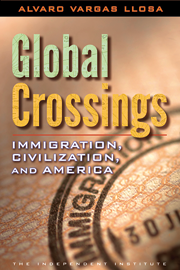Just over a decade ago, in a paper entitled “The World Needs Better Economic BRICs,” Goldman Sachs Asset Management Chairman Terence James “Jim” O’Neill introduced the acronym BRIC, which identified four rapidly developing economies—Brazil, Russia, India and China—as up-and-coming global leaders.
In the decade since, the four economies have grown at a much faster pace than the rest of the world, lifting millions of people out of poverty: some 40 million in Brazil alone.
Indeed, a more recent Goldman Sachs report, published in 2010, predicted that the BRIC countries could account for 41% of the world’s market share by 2030. But that’s far from certain.
Brazil’s economy, for example, is plagued with problems, despite a 4.4% compounded annual growth rate over the past five years. Unless Brazil cuts the Gordian knot, the BRIC group could become the RIC group.
Brazil’s place as one of the BRICs was originally made possible by the bold privatization and economic liberalization policies of President Fernando Henrique Cardoso. His successor, “Lula” da Silva, continued the reforms.
Dilma Rousseff, da Silva’s hand-picked successor, is trying as well—attempting to curb excessive government spending and reforming one of the few Latin American pension systems that is still government-controlled.
But President Rousseff has her work cut out for her, since the global economic downturn has helped trigger a wave of protectionist hysteria in her country. The growing protectionist chorus—which includes powerful voices in Rousseff’s own government—is now threatening the reform agenda.
The protectionists argue that cheap products originating in China and Mexico, coupled with the loose monetary policies of the United States and Europe—a subject Rousseff brought up with President Obama during her recent White House meeting—is making it impossible for Brazilian companies to compete successfully.
To counteract these outside forces, the protectionists want Brazil to revise the 2002 bilateral trade agreement with Mexico, under which cars trade back and forth pretty freely.
They also want to raise the South American Common Market’s external tariffs—despite the fact that Brazil already places an average 10% tariff on imports—and want the Brazilian central bank to keep cutting rates, which they believe will make exports cheaper and imports more expensive.
Brazil’s problem, however, is not appreciating currency, too many cheap imports, or unfair practices by competitors.
The real problem is that Brazil’s government has been overtaxing, overspending, over-regulating, and placing too many other obstacles in the way of businesses, entrepreneurs and investors.
Brazil’s economy seriously underperformed last year, growing at an estimated 2.7%, while the Russian, Indian and Chinese economies were growing at 4.3%, 7.8% and 9.2%, respectively. Meanwhile, Brazil’s currency, the real, has appreciated by 30% over the past two years, and manufacturing has dropped significantly as a percentage of gross domestic product (GDP) compared to a decade ago.
The reasons for the downturn are not surprising. Since the 1990s, Brazil’s government has doubled its spending as a percentage of GDP. Huge government expenditures—for offshore oil exploration, subsidies for national “champion” companies and other purposes—have produced huge deficits and onerous interest rates.
Trade has become more complicated and costly, with tariffs increasing on a list of 100 products until 2014. Taxes are a labyrinth and a burden, with more than 80 different levies. Laws “protecting” workers under a code originally imported from Mussolini’s fascist Italy add to business costs, not to mention the 10 billion reals ($548 million U.S.) it costs the judicial system to deal with related lawsuits.
The picture isn’t pretty.
One would like to believe, judging by her record thus far, that President Rousseff doesn’t plan to give in to the siren song of protectionism. This much is true: If she isn’t as protectionist as those around her, she’s fast losing the political will and agenda to drown out opposing voices.
The world—not just Brazil—needs Rousseff to prove that she can go even further than she already has, addressing the country’s deeply rooted economic problems, such as the social security pension system. If she doesn’t move forward with reform, Brazil will march backward, producing ripple effects that will be felt far beyond Brazil’s borders.












